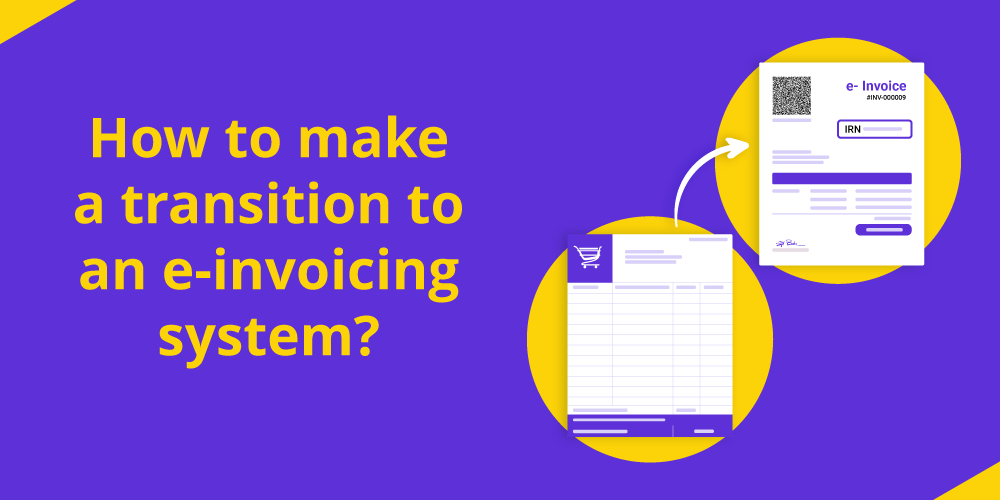How to make a transition to an e-invoicing system?
Businesses must use the government portal to approve and authenticate invoices after the e-invoice idea is introduced. According to the most recent update, all registered individuals whose total turnover (based on PAN) in any previous fiscal year from 2017–18 onwards surpasses Rs.5 crores need to generate e-invoices starting on August 1, 2023. Let’s examine the current practice before moving on to how to switch to a new e-invoicing system.
What is e-invoicing?
The e-invoice is a system wherein GSTN electronically verifies B2B invoices before utilising them on the shared GST portal. A unique identification number is assigned to every invoice by the Invoice Registration Portal (IRP), run by the GST Network (GSTN).

How is the e-invoicing system better than the current process?
Every company generates electronic bills manually or using billing software, which is generally accepted. The way reports and invoices are generated has changed with the introduction of e-invoicing. B2B invoices submitted to IRP must undergo electronic authentication.
An “Invoice Registration Number (IRN)” is a unique number generated for each uploaded invoice whenever the e-invoice data is uploaded to the IRP system in the prescribed JSON format. This is the first step in the e-invoice concept. For future use by different government portals like GST or the e-Way Bill portal, the e-invoice is tagged with a QR code and its IRN.
Two noticeable differences can be seen if you closely examine the present e-invoice system. Initially, the invoice must be verified by IRN. Recall that an invoice is invalid if it does not have an IRN. Second, the e-invoice data would automatically record the GST e-Way bill and provide invoice details in GST reports.
Most of your compliance requirements will be met by submitting your e-invoice data to the IRP system. That’s the technological level at which the government develops the e-invoice system.
How do we transition from the current system to the e-invoicing system?
Understanding the e-invoice system is the first step in getting your company ready for one. You’ll be able to identify requirements and close gaps if you comprehend the principles and operation of the e-invoice system. Instructing your internal teams on the e-invoice-related modifications to the invoice process is also necessary. These are the primary functions you need to adopt when transitioning to the e-invoicing system-
Generating e-invoice data
Uploading e-invoice data in JSON format by the given schema is required. The invoice details entered by the e-invoice standards should cause the accounting software to produce e-invoice JSON. The accounting software should accommodate the required and optional fields of the e-invoice standard while considering your business needs.
Seamless integration with the IRP system
You will need to upload the created invoice to the IRP portal for validation and IRN generation after preparing it with the assistance of your accounting software. Here, the accounting program should have the inbuilt capacity to communicate with the IRP system and automatically upload the JSON e-invoice. In addition to saving you time, this will improve invoice processing effectiveness.
Download and capture IRN
After the invoice is generated and successfully navigated to the IRP site, the e-invoice JSON will be digitally signed and updated with additional components like the IRN number and QR Code. The IRN and other information should be included in the invoice you send to your customer by the accounting software, which should be able to download the digitally signed JSON.
Conclusion
Businesses should consider investing in e-invoicing due to its numerous advantages, including enhanced productivity, lower expenses, and fewer mistakes. Since e-invoicing is still required by many governments worldwide, companies must begin their transition strategy as soon as possible. Switching to an e-invoicing system will require planning to ensure a smooth transition, including deciding the best e-invoicing solution, getting personnel ready, training, and corresponding with trading partners.